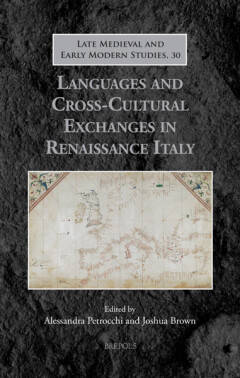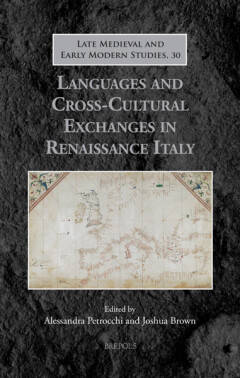
- Afhalen na 1 uur in een winkel met voorraad
- Gratis thuislevering in België vanaf € 30
- Ruim aanbod met 7 miljoen producten
- Afhalen na 1 uur in een winkel met voorraad
- Gratis thuislevering in België vanaf € 30
- Ruim aanbod met 7 miljoen producten
Zoeken
€ 121,90
+ 243 punten
Omschrijving
Although much work has been done in the field of Renaissance Studies, at present there is no book which offers a comparative overview of the linguistic interaction between Renaissance Italy and the wider world. The present volume is intended to fill this void, representing the first-ever collection of essays that deal with multiple types of language contact and cross-cultural exchanges in and with respect to Renaissance Italy (1300-1600). We bring diverse disciplinary perspectives together: literary scholars, historians, and linguists with different regional expertise; we argue for multilingualism and language contact as products of a period of dynamic change which cannot be fully grasped through a single framework. The contributions present a variety of case-studies by often cross-fertilising their approaches with other disciplinary lenses. This book aims to provide a comprehensive picture of a truly global Renaissance Italy where languages, textual traditions, and systems of knowledge from different geographical areas either combined or clashed. It takes a fresh approach to the history of late medieval and early modern Italy by focusing on East/West linguistic and cultural encounters, transmission of ideas and texts, multilingualism in literature (various genres and various forms of multilingualism), translation practices, reception/adaptation of new knowledge, transculturalism and literary exchanges, and the relationship between languages and language varieties.
Specificaties
Betrokkenen
- Auteur(s):
- Uitgeverij:
Inhoud
- Aantal bladzijden:
- 434
- Taal:
- Engels
Eigenschappen
- Productcode (EAN):
- 9782503601816
- Verschijningsdatum:
- 20/04/2023
- Uitvoering:
- Hardcover
- Formaat:
- Genaaid
- Gewicht:
- 7887 g

Alleen bij Standaard Boekhandel
+ 243 punten op je klantenkaart van Standaard Boekhandel
Beoordelingen
We publiceren alleen reviews die voldoen aan de voorwaarden voor reviews. Bekijk onze voorwaarden voor reviews.








